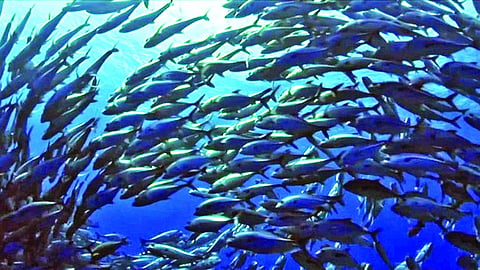

Vast parts of the world’s oceans are still the Wild West when it comes to conservation. Fishing, shipping, tourism and ocean protection are currently controlled by around 20 organizations. However, their regulations only apply to a distance of 200 nautical miles (370 kilometers) from the coast. Farther out, international waters start, and individual states don’t have any power or say. Although the high seas make up more than half of the surface of the Earth and 61% of all oceans, only 1% of international waters are under protection. Illegal fishing, overfishing and other forms of damage to the ecosystem, such as deep-sea mining, oil and gas drilling, can hardly be monitored, tracked or prosecuted in a consistent way.
That’s why government officials from 51 countries want to now negotiate the High Seas Treaty at the United Nations in New York. The treaty has been in the works for years and is supposed to protect species and allocate the oceans’ resources in a sustainable way. Why is a healthy underwater world so important for humans and our planet? The resources of the ocean don’t just sustain coast dwellers, but almost 3 billion people worldwide. The entire sea industry has a worth of $3 trillion (2.8 trillion euros) — that’s 5% of the world’s gross domestic product.
The ocean isn’t just important for beach tourists and fishers. We also need it in order to generate sustainable wave and tidal energy, as well as for the production of commodities and even medicine. Some agents used to fight leukaemia, for instance, are derived from a shallow water sponge called Tectitethya crypta, which can be found in the waters of the Caribbean. The poison of the fish-eating sea snail Conus magus is being used to develop an effective painkiller. Many similar possibilities have yet to be explored, but scientists see a huge potential for the treatment of diseases.
More than half of the total amount of oxygen in our atmosphere is created by creatures in the ocean. At the same time, oceans store 50 times more carbon dioxide than what’s currently found in our atmosphere. The warmer the ocean gets, the less CO2 it can store. It’s a vicious cycle: the warmer it gets, the less our oceans can protect the planet from even more extreme weather events.
If temperatures keep increasing at their current speed, scientists believe many shellfish such as mussels and snails will not survive. That’s due to ocean acidification: if the CO2 content in the seawater increases, the PH level in the water changes. The increasing acidity hampers the creation of the chalky shells of the animals. This throws entire biospheres off-balance, and could threaten entire economic sectors, such as the breeding of oysters and mussels.
The rising temperatures in the atmosphere triggered by the burning of coal, oil and gas also change ocean currents as the water gets warmer. This can already mean death for many creatures, such as corals. Corals live in symbiosis with colorful algae which help feed them. The warming of the water can lead to algae death, which means more stress for corals, leading to many losing their color, which is also known as coral bleaching.
If nothing changes, half of all sea dwellers will be critically endangered by the end of this century, according to estimates by UNESCO. This doesn’t necessarily mean we can’t use the ocean any longer. It just means we have to use it in a way that doesn’t harm it, or at least only harms it to the extent that it can regenerate on its own.
Visit news.dtnext.in to explore our interactive epaper!
Download the DT Next app for more exciting features!
Click here for iOS
Click here for Android